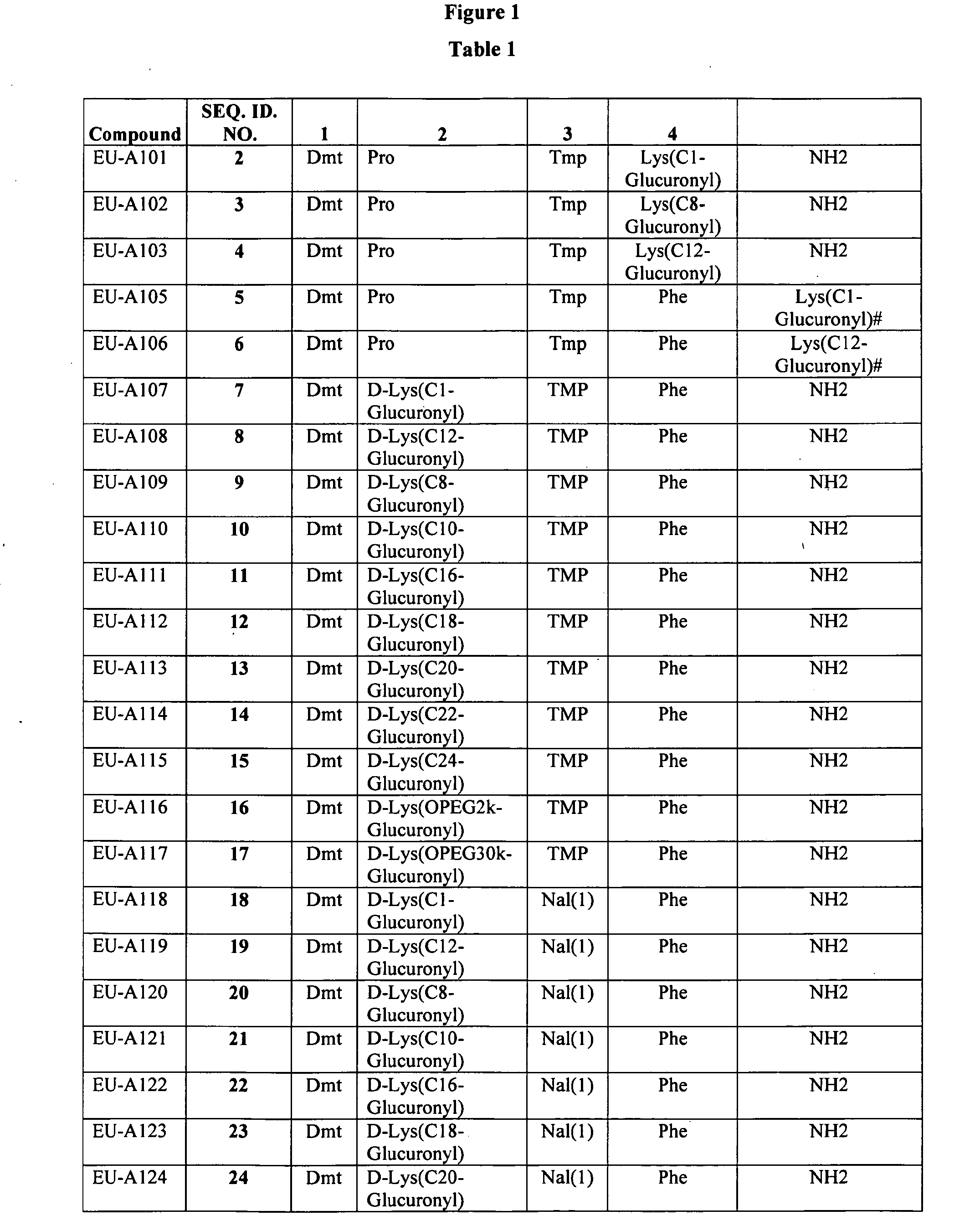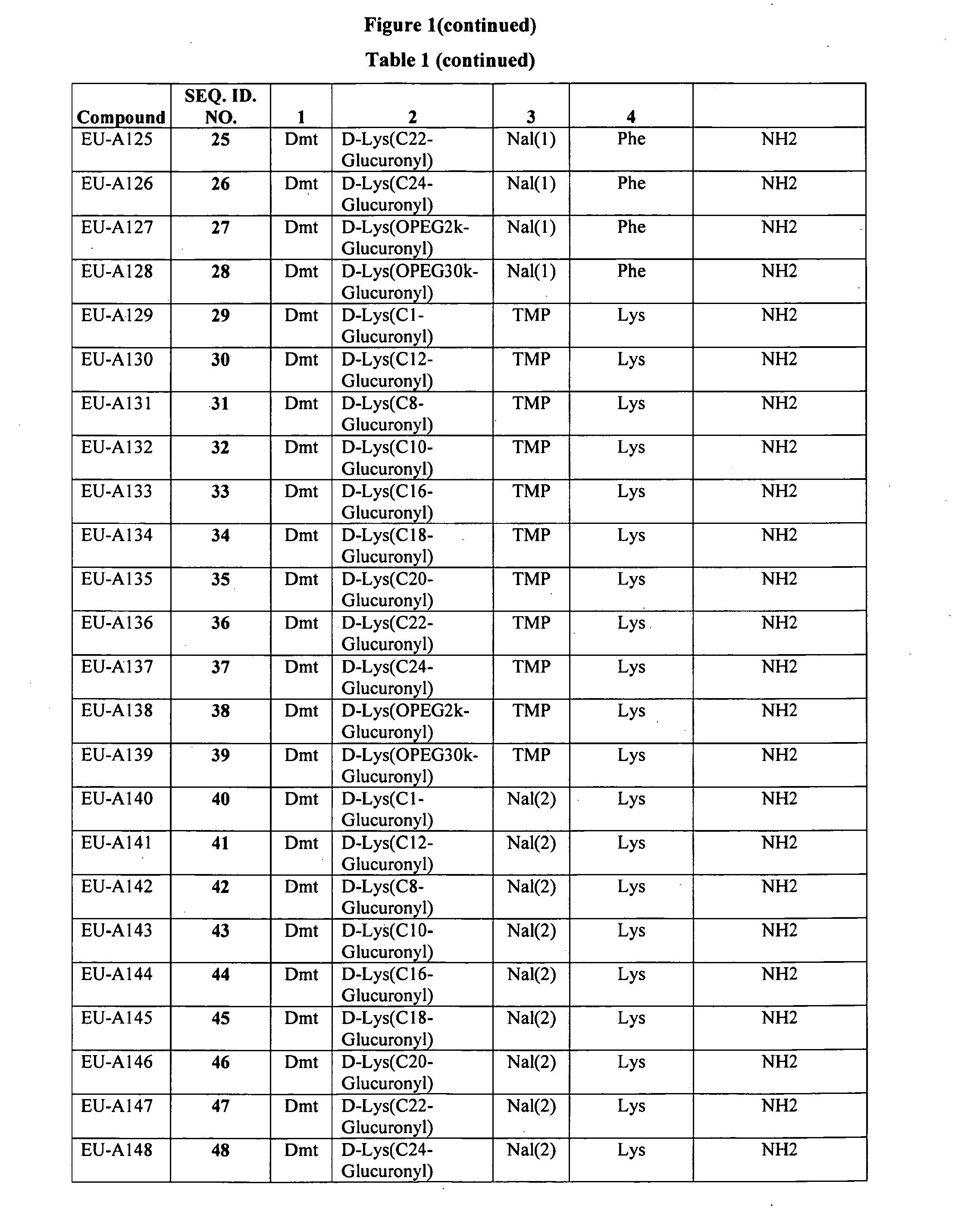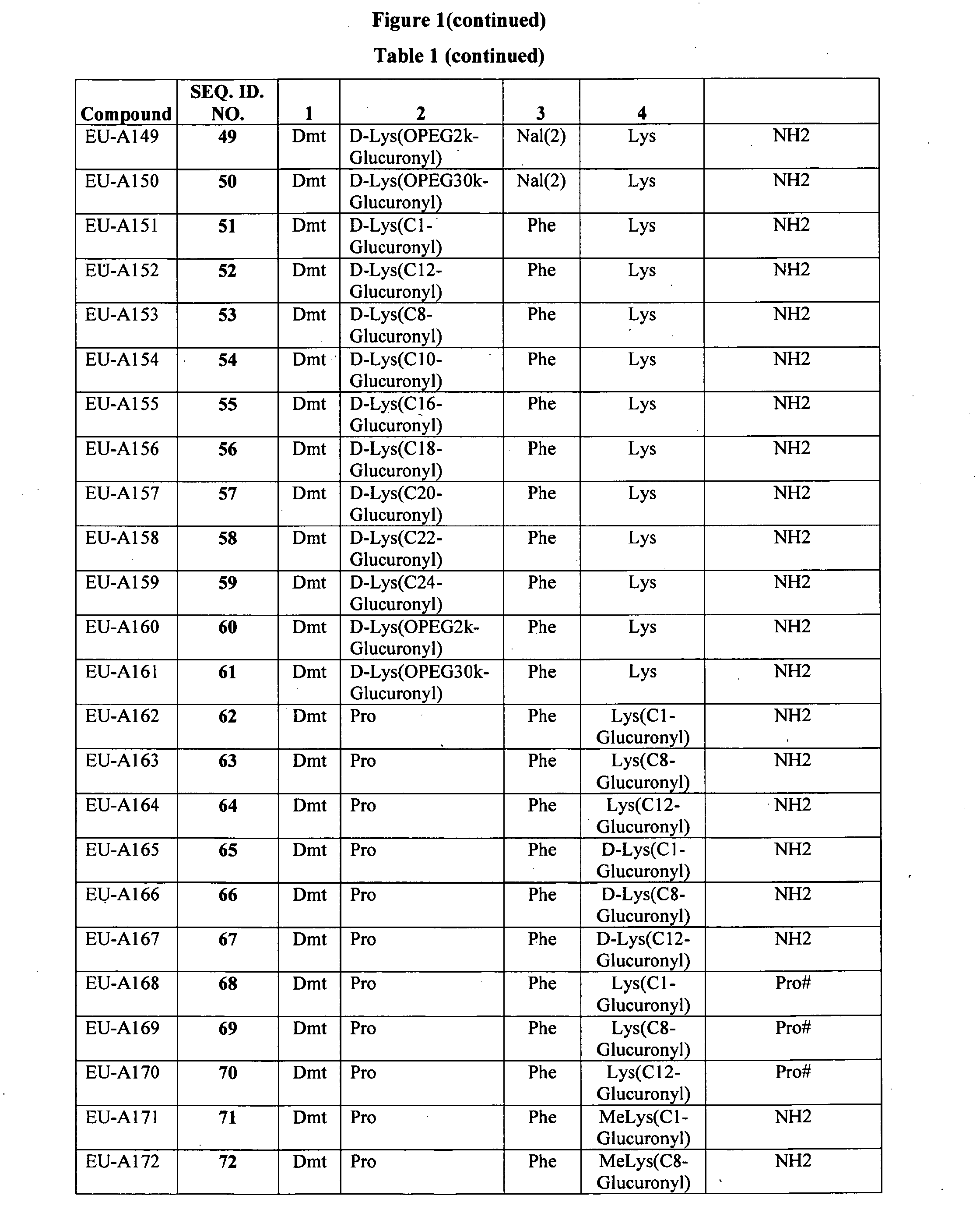Improved peptide pharmaceuticals
- Summary
- Abstract
- Description
- Claims
- Application Information
AI Technical Summary
Benefits of technology
Problems solved by technology
Method used
Image
Examples
example 1
Reagents—N-α-Fmoc,N-ε-(1-octyl β-D-glucuronide-6-yl)-L-lysine
[1191]In an oven-dried 250 mL Erlenmeyer flask is placed 1-octyl β-D-glucuronic acid (Carbosynth Ltd., 3.06 g, 10 mmol), 50 mL anhydrous DMF, and anhydrous HOBT (1.62 g, 12 mmol). A chilled (4° C.) solution of DCC (2.48 g, 12 mmol) in 50 mL of DMF is added, with stirring, and the reaction is allowed to proceed for 5 min. The copious white precipitate of N,N′-dicyclohexylurea is filtered on a fritted glass funnel and the filtrate is added to a solution of N-α-Fmoc-L-lysine (3.68 g, 10 mmol) in 25 ml anhydrous DMF. The reaction is allowed to proceed for 25 min with warming to room temp or until the ninhydrin color is very faint. The reaction mixture is filtered, stripped to dryness and crystallized from MeOH / Et2O by dissolution in MeOH and slow dilution to the cloud point with Et2O, followed by refrigeration. Further purification can be achieved by silica gel chromatography using a solvent gradient from EtOAc to EtOAc / EtOH / A...
example 2
Synthetic Peptide Analogs
[1194]In general, peptide synthesis methods involve the sequential addition of protected amino acids to a growing peptide chain. Normally, either the amino or carboxyl group of the first amino acid and any reactive side chain group are protected. This protected amino acid is then either attached to an inert solid support, or utilized in solution, and the next amino acid in the sequence, also suitably protected, is added under conditions amenable to formation of the amide linkage. After all the desired amino acids have been linked in the proper sequence, protecting groups and any solid support are removed to afford the crude peptide. The peptide is desalted and purified chromatographically.
[1195]A preferred method of preparing the analogs of the physiologically active truncated peptides, having fewer than about fifty amino acids, involves solid phase peptide synthesis. In this method the α-amino (Nα) functions and any reactive side chains are protected by aci...
example 3
N-Terminal endomorphin-1 analog—AcLys(1-octyl β-D-glucuronide-6-yl)endomorphin 1 (Ac-Lys(1-octyl β-D-glucuronide-6-yl)-Tyr-Pro-Trp-Phe-NH2 (AcLys(1-octyl β-D-glucuronide-6-yl)endomorphin 1)
[1209]As described above, Fmoc-Tyr(t-Bu)-Pro-Trp(Boc)-Phe-NH-Rink amide MBHA resin is prepared as described in (Koda, Y., et al. (2008) Bioorg Med Chem 16: 6286-6296). The resin is Nα-deprotected with piperadine / DMF solution, washed with solvent and coupled with 2 equivalents of N-α-Ac,N-ε-(1-octyl β-D-glucuronide-6-yl)-L-lysine using a standard coupling mixture (e.g. HBTU / DIPEA). Following completion of the coupling, the peptide is deprotected and cleaved from the resin using a deprotection mixture (95% TFA / 5% H2O or DODT). The solvent is removed by a stream of nitrogen and the crude peptide is precipitated with cold Et2O, collected, dissolved in 20% acetonitrile and lyophilized. Purification is by reversed phase hplc in a mobile phase containing a gradient from H2O to H2O / acetonitrile using a 0....
PUM
| Property | Measurement | Unit |
|---|---|---|
| Fraction | aaaaa | aaaaa |
| Mass | aaaaa | aaaaa |
| Structure | aaaaa | aaaaa |
Abstract
Description
Claims
Application Information
 Login to View More
Login to View More - R&D
- Intellectual Property
- Life Sciences
- Materials
- Tech Scout
- Unparalleled Data Quality
- Higher Quality Content
- 60% Fewer Hallucinations
Browse by: Latest US Patents, China's latest patents, Technical Efficacy Thesaurus, Application Domain, Technology Topic, Popular Technical Reports.
© 2025 PatSnap. All rights reserved.Legal|Privacy policy|Modern Slavery Act Transparency Statement|Sitemap|About US| Contact US: help@patsnap.com



